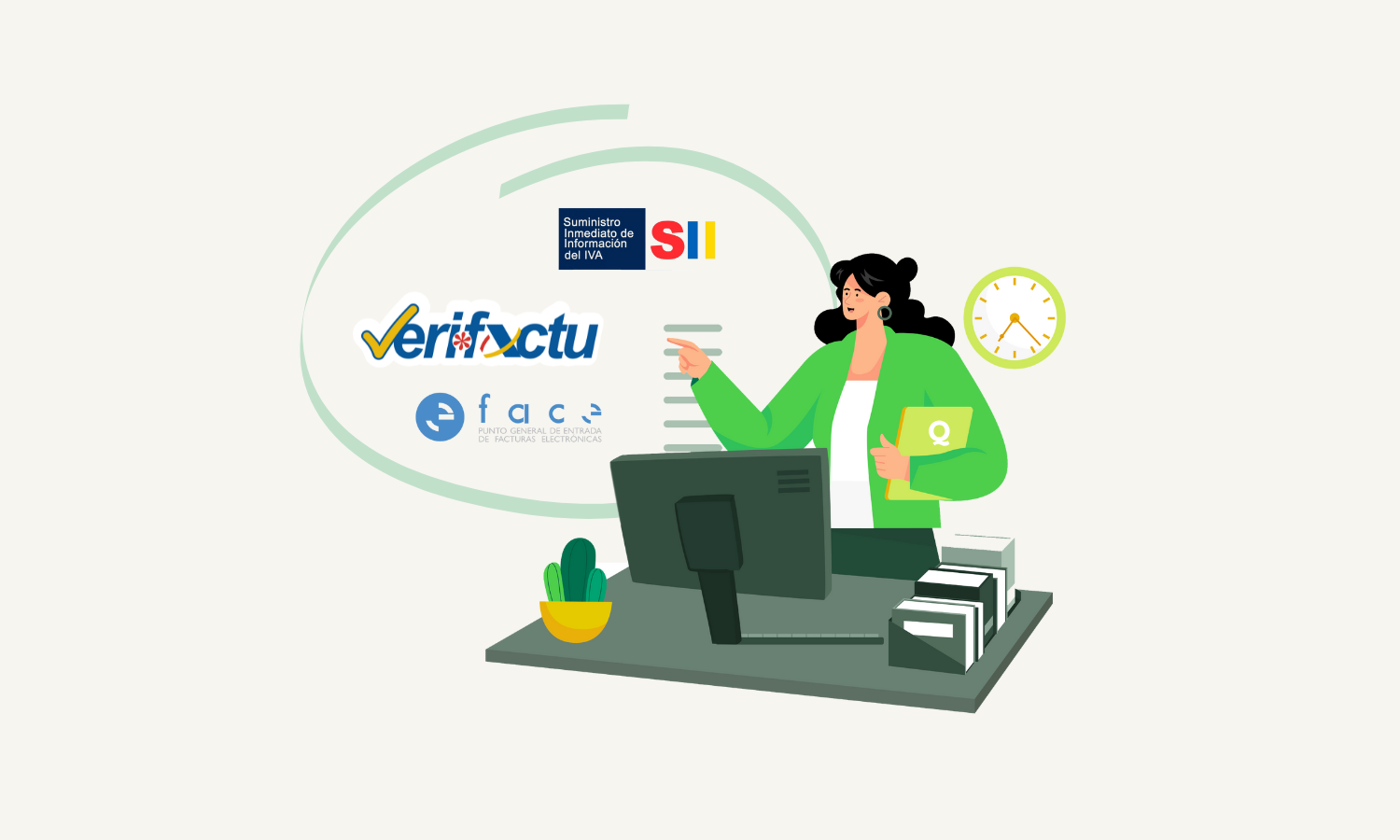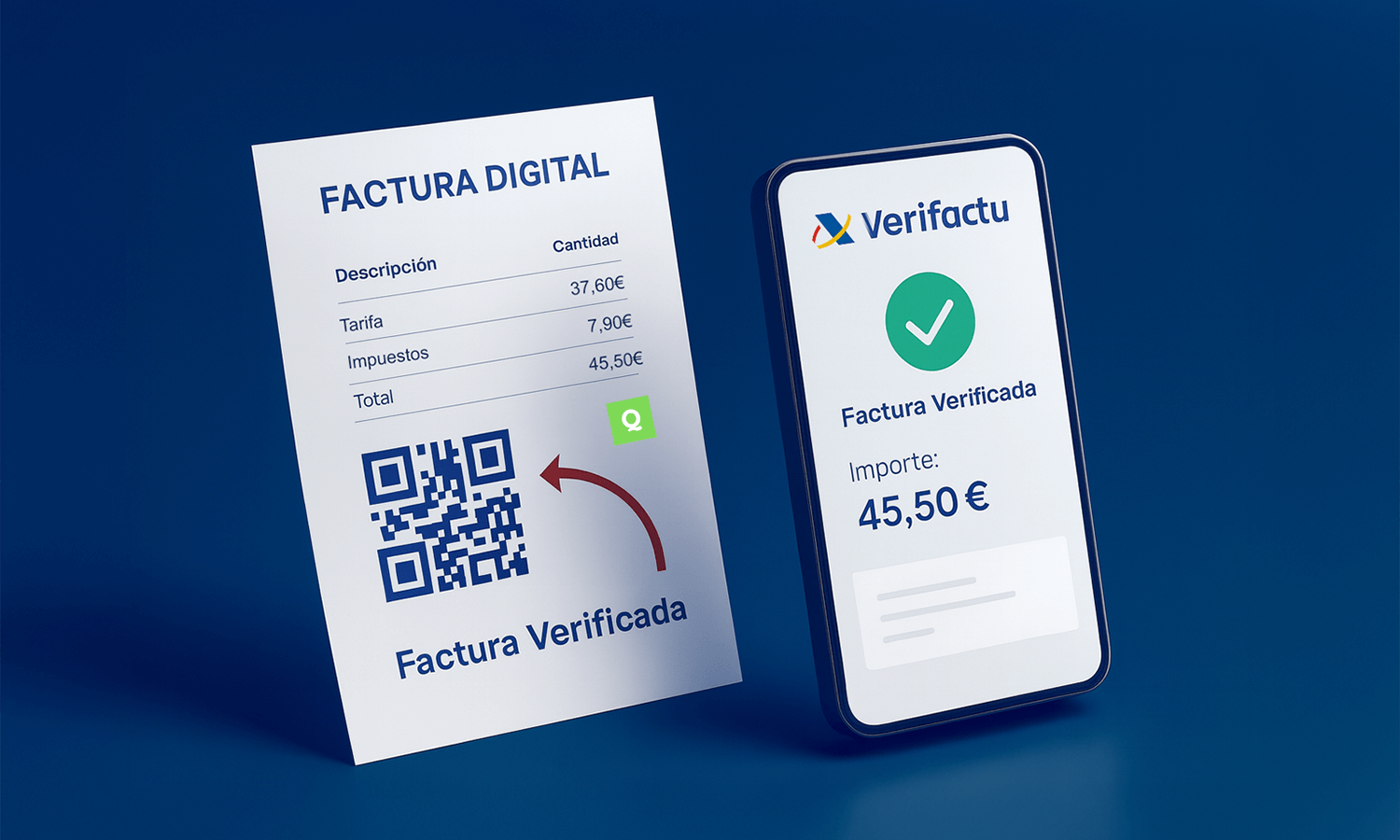Spain is entering a new phase of fiscal and technological transformation. For years, invoicing—one of the most critical functions for companies—retained the traits of an analog model.
Now, with the introduction of Verifactu, along with FACe and SII, the country is moving toward a new paradigm of comprehensive electronic invoicing, where traceability, transparency, and automation will define the standard.
These systems form the foundation of the new digital invoicing ecosystem—a framework that replaces manual processes with an automated, auditable model directly connected to the public administration.
And although the reform affects all companies, its impact will be particularly significant in the energy sector, where operational complexity and re-invoicing demand advanced management capabilities and strict compliance.
Regulatory compliance in the energy sector
Electricity and gas retailers operate within the regulatory framework defined by the CNMC, which sets the technical and procedural rules for exchanging information with distributors and end customers, among other obligations.
This data flow—which includes contracts, readings, registrations, cancellations, self-consumption, and claims—requires robust and traceable systems capable of ensuring integrity, synchronization, and timely compliance.
With the implementation of Verifactu, these obligations expand: companies must not only exchange data correctly but also digitally record and verify each invoice according to AEAT standards.
In this context, using energy billing software designed specifically for the Spanish regulatory environment becomes essential. It enables simultaneous compliance with CNMC’s technical requirements and AEAT’s fiscal rules, ensuring a coherent, automated, and verifiable end-to-end information flow.
Up next, we’ll see how these three systems interact to build a more transparent, automated, and connected invoicing model.
Verifactu: real-time control for all companies
The VERI*FACTU system, developed by the Spanish Tax Agency (AEAT), will take effect on January 1, 2026 for companies (and July 1, 2026 for self-employed professionals).
Its goal is clear: to guarantee the integrity, traceability, and authenticity of all invoices issued in Spain.
Technically speaking: every invoice must be generated in Facturae 3.2.2 (XML) format, digitally signed with XAdES, include a SHA-256 hash, and carry a QR code that can be verified on AEAT’s official platform.
In practice, each invoice is “sealed and signed,” referencing the previous one—creating a “chain of invoices” that cannot be altered retroactively. The recipient can also verify that the invoice is properly registered.
For this registration step, companies will have two options:
- Online: sending invoice records directly to AEAT in real time.
- Offline: storing invoices with their digital fingerprint and submitting them later.
👉 For energy retailers, Verifactu means:
- Additional manual tasks, reliance on third-party software, and uploads to AEAT’s portal—with the risk of fines.
- Or the need to ensure that their current energy billing software evolves to operate in a fully traceable, automated environment that communicates directly with AEAT and retains records for at least four years.
FACe: the electronic gateway for Public Administrations
The FACe system has been in operation for several years and is mandatory for any company invoicing a public administration.
Through FACe, companies submit electronic invoices in Facturae format, which are then routed directly to the corresponding public body.
For energy retailers, this is especially relevant when managing:
- Energy supply contracts with city councils, provincial authorities, or public institutions.
- Energy efficiency or self-consumption projects funded by public programs.
FACe does not replace Verifactu—it complements it:
- FACe governs who the invoice is issued to (when the recipient is a public administration).
- Verifactu governs how the invoice is generated, validated, and registered with AEAT.
SII: immediate transmission of tax information
The Immediate Supply of Information (SII) was the first major step toward fiscal digitalization in Spain.
In operation since 2017, it is mandatory for companies billing more than €6 million annually, VAT groups, and entities registered under REDEME (the monthly VAT refund registry), as well as other voluntary participants.
SII doesn’t handle invoices directly but rather VAT ledgers: every issued or received invoice must be electronically reported to AEAT within four business days.
For energy and gas retailers with high transaction volumes, SII ensures synchronization between accounting and fiscal records—reducing discrepancies or reporting errors in VAT filings.
In this new landscape, SII and Verifactu will coexist:
- SII focuses on fiscal information (VAT).
- Verifactu guarantees the authenticity and traceability of invoices.
Together, they provide a complete and transparent view of the invoicing and tax reporting cycle.
An integrated ecosystem for energy invoicing
For energy retailers, the new digital environment requires far more than issuing electronic invoices. It means redefining the entire billing process—from distributor integration to customer delivery and communication with tax authorities—while also managing non-payments, notifications, and other workflows that demand flexible, intelligent systems without manual intervention.
In short:
- Verifactu ensures the integrity and traceability of invoices.
- FACe centralizes invoice delivery to public entities.
- SII keeps tax records and VAT ledgers synchronized.
The result: a safer, more automated, and digitally aligned system for the energy sector.
How to choose the right energy billing software
The new regulatory context doesn’t just require compliance—it demands a full rethink of how invoicing works in the energy industry. Verifactu, FACe, and SII are reshaping the relationship between retailers, customers, and public administrations, and failing to adapt can lead to unnecessary penalties.
Choosing the right energy billing software is therefore a strategic decision that can define a company’s efficiency and competitiveness for years to come.
What should modern energy billing software offer?
In a high-regulation environment like today’s, companies need solutions that go beyond PDF generation or basic invoice calculations. The new standard requires systems that integrate automation, regulatory control, and scalability.
These are the pillars every retailer should evaluate:
- Automated regulatory compliance: The software must align with AEAT and CNMC regulations, including native integration with Verifactu, automatic Facturae 3.2.2 generation, XAdES signing, and SHA-256 hashing. Advanced technology for advanced results—no patches or manual workarounds.
- Seamless integrations with distributors and internal systems: With more than 340 distributors, automated integrations are crucial. The system must handle ATR exchanges, automated invoicing, and rejection management while synchronizing consumption readings and sending data to AEAT or FACe automatically.
- Total control and traceability: Every invoice should leave a verifiable audit trail—what was billed, when, under which regulation, and whether it was rectified. It must also comply with Verifactu’s four-year record retention rule and support frictionless audits.
- Scalability and performance: Retailers process thousands or even millions of invoices each month. Modern energy billing software must include a high-performance calculation engine and automation tools that scale effortlessly.
- Smart automation and alerts: To run fully automated workflows, the system must detect anomalies in real time—like gaps in readings or data validation errors—pause specific processes, and trigger alerts or reports without interrupting the rest of the invoicing cycle.
- Data security and governance: Compliance with standards such as GDPR and secure data transmission and storage are fundamental. In today’s market, energy is measured not only in kilowatts but also in data integrity.
Why QUIXOTIC has an edge
At QUIXOTIC, we understand the daily challenges energy retailers face:
Does your system generate the XMLs for FACe and Verifactu, but then you have to download, sign, upload, and check their status manually—over and over again?
You know that workflow doesn’t scale.
That’s why we built our energy billing software from the ground up, designed specifically for the new digital invoicing ecosystem. Our approach rests on three core principles: end-to-end automation, regulatory compliance, and operational agility.
→ True end-to-end automation:
QUIXOTIC connects every point in the process—from distributor messaging to invoice generation, signing, and submission—within a continuous, secure flow. Nothing is left outside the system. Every step is validated and automated, eliminating manual tasks, reducing errors, and multiplying operational efficiency.
→ Built-in regulatory compliance:
The platform is already ready for Verifactu, integrating Facturae 3.2.2 generation, XAdES signing, SHA-256 hashing, and full event logging. Compliance is automated—no external tools or manual steps required.
→ Direct integration with FACe and SII:
The system connects energy retailers with public administrations through end-to-end integration that enables sending, signing, and tracking invoices directly from QUIXOTIC—a unique capability in the industry.
→ Cloud scalability and performance:
Our modular SaaS architecture supports everything from a few CUPS to hundreds of thousands, processing millions of invoices with the same level of control, traceability, and performance.
→ Expert partnership and continuous support:
More than software—it’s a partnership. Our technical and regulatory teams continuously update the platform to incorporate new rules and maintain compliance without costly custom developments.
In short, QUIXOTIC doesn’t just adapt to the new digital invoicing ecosystem—it drives it forward.
It unifies Verifactu, FACe, and SII management in one end-to-end platform that automates, validates, and secures the entire energy invoicing process.
⚡ Schedule a demo today and discover how to transform your invoicing into a driver of efficiency, transparency, and compliance.
.svg)



.jpg)














